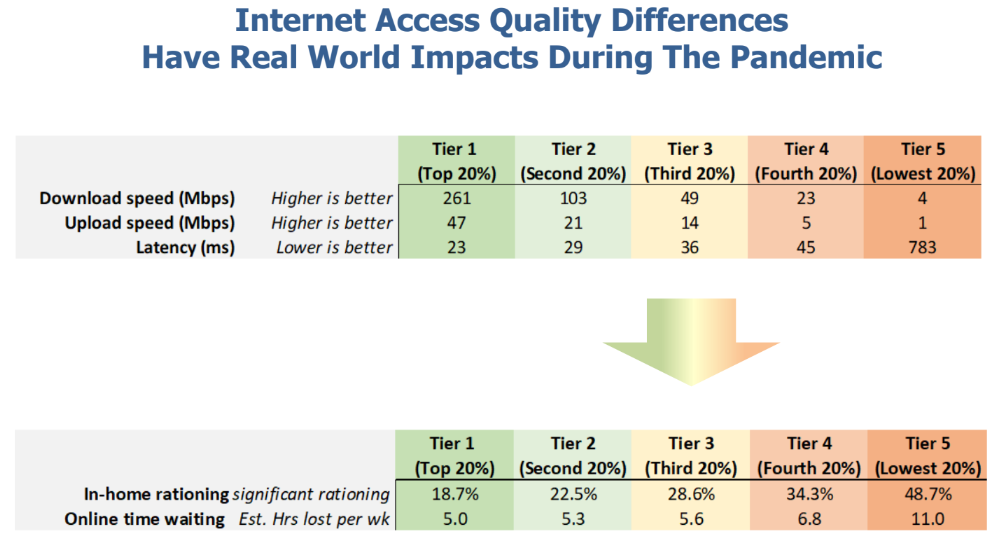FBA Report: Broadband Can Handle Pandemic, But Work Remains
While the internet has helped mitigate the damage from COVID-19, work is still needed to improve its infrastructure by closing the digital divide.
That is according to the Fiber Broadband Association's (FBA) latest annual consumer internet usage study/report, conducted by market research firm RVA.
Related: Hill Leaders Asked to Focus on Underserved Support
RVA conducted a poll of 2,000 U.S. internet users for two weeks ending April 9 as well as using broadband speed tests on those respondent's service during the online polling.

"Many wondered if the Internet would “break” during this Pandemic. It did not, despite greatly increased usage, per the FBA, which said controlled tests from independent testing firm “Sam Knows” show only about a 2% decrease in speeds from a point just prior to the pandemic.
The report suggested that outcome could have been different.
"It seems clear that if the same circumstances of Pandemic and shutdown occurred several years ago, with a much lower quality broadband access, there would have been far more severe impacts from the crisis. Pandemic spread could have been faster given less ability to retreat from traditional contact, economic impacts almost certainly would have been heightened, and mental health impacts would be more acute."
The smarter way to stay on top of the multichannel video marketplace. Sign up below.
Related: COVID-19 Crisis Hits TV Industry
The study found that more than nine in 10 said the internet was either somewhat or very important to their household, with videoconferencing a big factor. The most important broadband use, the survey found, was connecting with family and friends (33%), followed by news and information (24%) and ordering food (20%). Entertainment (19%) and working or looking for work (17%) came next.
Interestingly, only 4% said "education" and only 2% said "telemedicine," both of which have been a big focus of Washington policymakers. The question was open ended, so the respondents had to come up with the categories themselves.
And while 25% said they were streaming more pre-recorded entertainment product, even more (27%) said they were streaming more "less professionally produced and small audience materials," like live-streamed religious services, music performances, lectures or demonstrations.
Where the survey showed some issues was with in-home rationing and online waiting times that varied between rural and urban.
In the highest-tier service, which tended to be the most-populated, urban, areas, les than one in five (18.7%) said they were doing "significant" rationing of internet use, while that number was 48% for the lowest tier of service, which tended to overindex for less dense population.
There was a similar digital divide over latency, with top-tier service users estimating about five hours a week in lost time versus 11 hours for the lowest tier of service.
"We hypothesize that higher quality broadband access is simply not currently available to most of those in low density areas," said the study.
Contributing editor John Eggerton has been an editor and/or writer on media regulation, legislation and policy for over four decades, including covering the FCC, FTC, Congress, the major media trade associations, and the federal courts. In addition to Multichannel News and Broadcasting + Cable, his work has appeared in Radio World, TV Technology, TV Fax, This Week in Consumer Electronics, Variety and the Encyclopedia Britannica.

